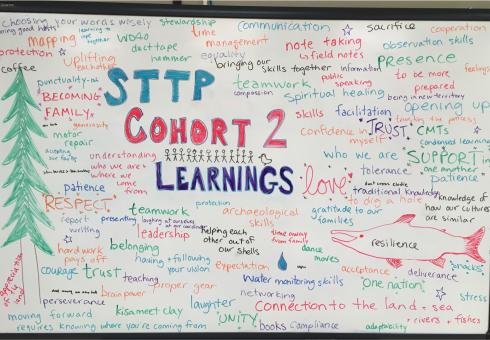What are some different approaches to training for Indigenous Guardians?
There are a number of ways you can approach training for your Indigenous Guardians, such as participating in existing training, developing new training, or seeking out mentoring and hands on learning opportunities. As you decide, be sure to think about and ask your guardians what kind of training they prefer. This can help you increase buy-in, engagement and attendance.
Participate in existing training
There may be relevant training providers, college or university programs, and certificate courses already up and running and available in your region. When possible, meet with instructors or educational institutions early on to determine if training can be delivered to meet your specific needs.
Think about incorporating cultural knowledge and locally adapted content into more formal or structured training. This can help make trainings more appropriate and meaningful to participants. Standard courses that have not been adapted for local delivery may fall flat and leave your guardian crew feeling disengaged or overwhelmed. Be sure to work through how to adapt and deliver courses in the most effective way with any given trainer or institution you engage with.
Here are some important questions to think about when considering participating in existing training:
